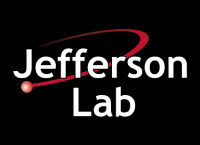The planned and potential applications of SRF technology fall into three broad areas, each with a set of critical technical issues that need to be addressed by R&D.
Low- to medium-current CW accelerators
Examples of this category include the CEBAF 12 GeV upgrade—that is, the imminent doubling of the energy of CEBAF, the large Jefferson Lab accelerator that serves nuclear physics—as well as the Rare-Isotope Accelerator now being planned by U.S. nuclear astrophysicists and others. Because of the CW operation, the cavities in these applications will operate at relatively modest gradient for optimum overall efficiency. RF losses (and by implication, refrigeration capacity) will, on the other hand, be a major cost driver. Beam currents being low, the required installed RF power will be dictated by the level of microphonics (the coupling of mechanical vibrations to the RF fields), not by the beam power.
The critical technical issues in this category are:
- Cavities with low losses and high Q 0 in CW operation at relatively modest gradient (~20–25 MV/m)
- New cavity geometries
- Control and mitigation of microphonics; RF control of cavities
- Consistency in the performance of cavities
- Low-heat-leak cryostat designs
Pulsed high-current proton or ion accelerators
Examples in this category include research facilities like Oak Ridge National Laboratory’s Spallation Neutron Source (SNS), for which Jefferson Lab built an SRF proton accelerator and an associated cryogenic system. Because of the high beam current, the gradients will be modest (10–20 MV/m) and will be dictated by the capabilities of the RF power sources and power couplers. The pulsed operation could generate large frequency excursions that will need to be mitigated.
The critical issues are:
- Dynamic behavior of SRF cavities; frequency control
- Beam halo; activation
- New cavity geometries
- HOM (higher-order mode) power generation and extraction
- RF power couplers
Pulsed high-energy linear accelerators (linacs) for electrons and other leptons
Examples are linear colliders like the International Linear Collider, muon colliders, and neutrino factories. These machines are characterized by large size and large numbers of components.
The critical technical issues are:
- Cost-efficient designs
- High gradient in cavities
- Consistency in the performance of cavities
- Cheap reliable power couplers
- Reliability of accelerator complex; high availability
Energy-recovering linear accelerators (ERLs)
Examples in this category include ERL-driven light sources—notably free-electron lasers like Jefferson Lab’s—and electron coolers—used to reduce the transverse emittance of stored ion beam. These accelerators are characterized by medium to large beam currents that are simultaneously accelerated and decelerated in the same cavities, so there is little net transfer of RF power between the sources and the beam. These high currents still generate large amounts of higher-order-mode (HOM) power that will need to be extracted to prevent beam instabilities. Small fluctuations in the beam properties can also cause a large random beam loading that will have to be controlled.
The critical technical issues are:
- Cavity designs for high current
- HOM mitigation and extraction
- Beam instabilities
- RF control of random beam loading; microphonics
- Halo mitigation and control
The table below, which is arranged according to beam current, illustrates the variety of challenges for the advance of SRF. The colors indicate levels of difficulty, with yellow meaning demanding, blue more demanding, and green the most demanding.



